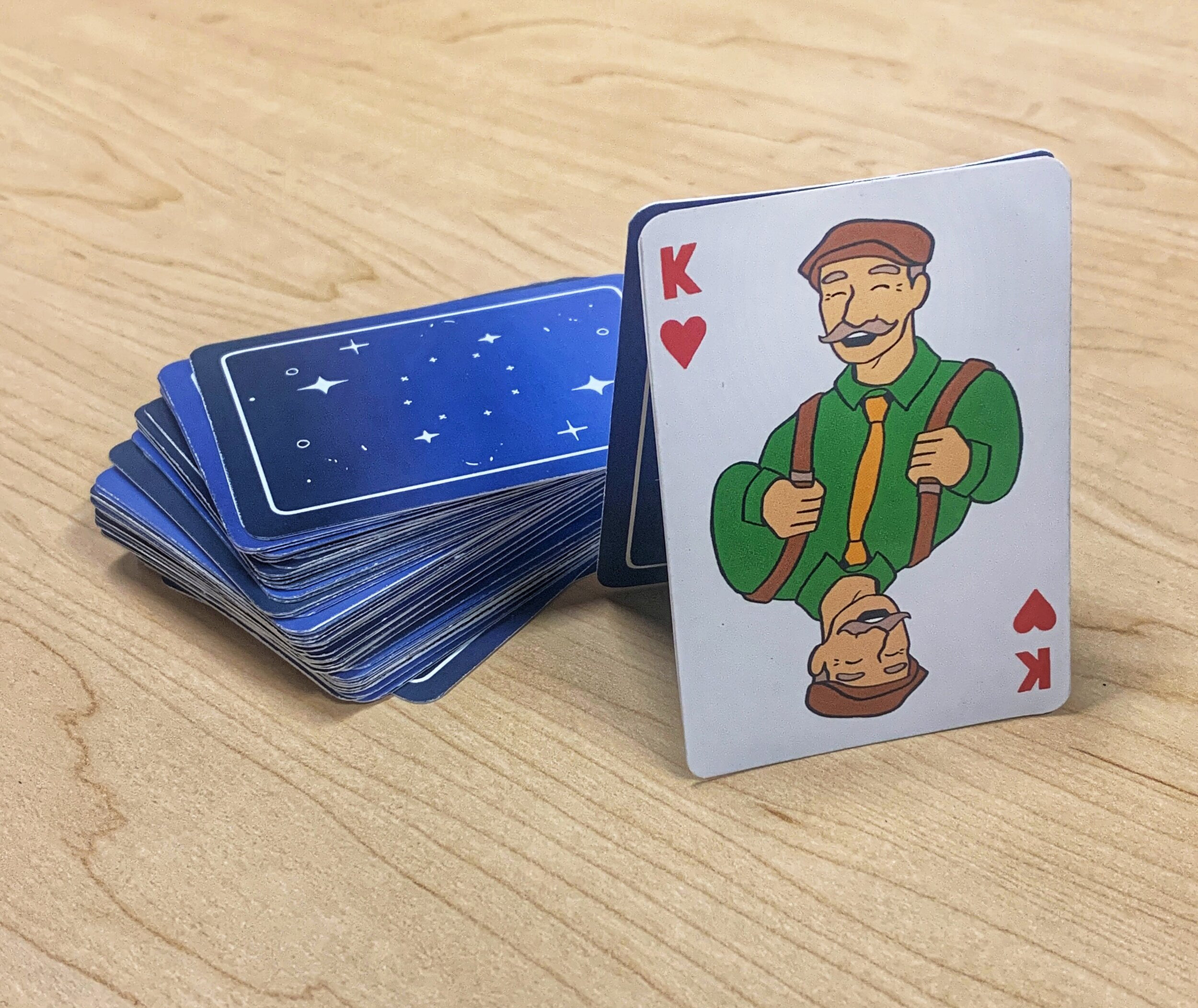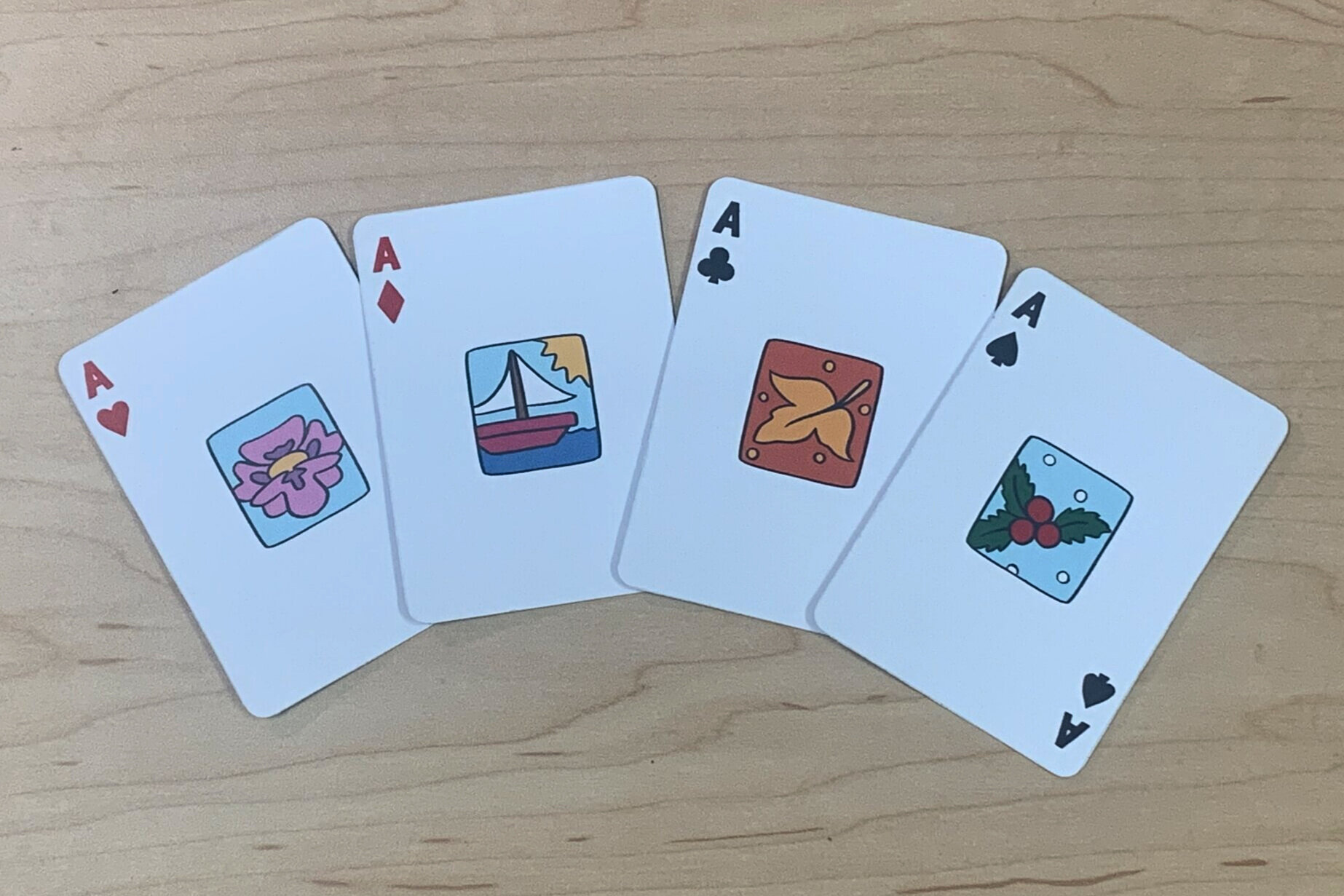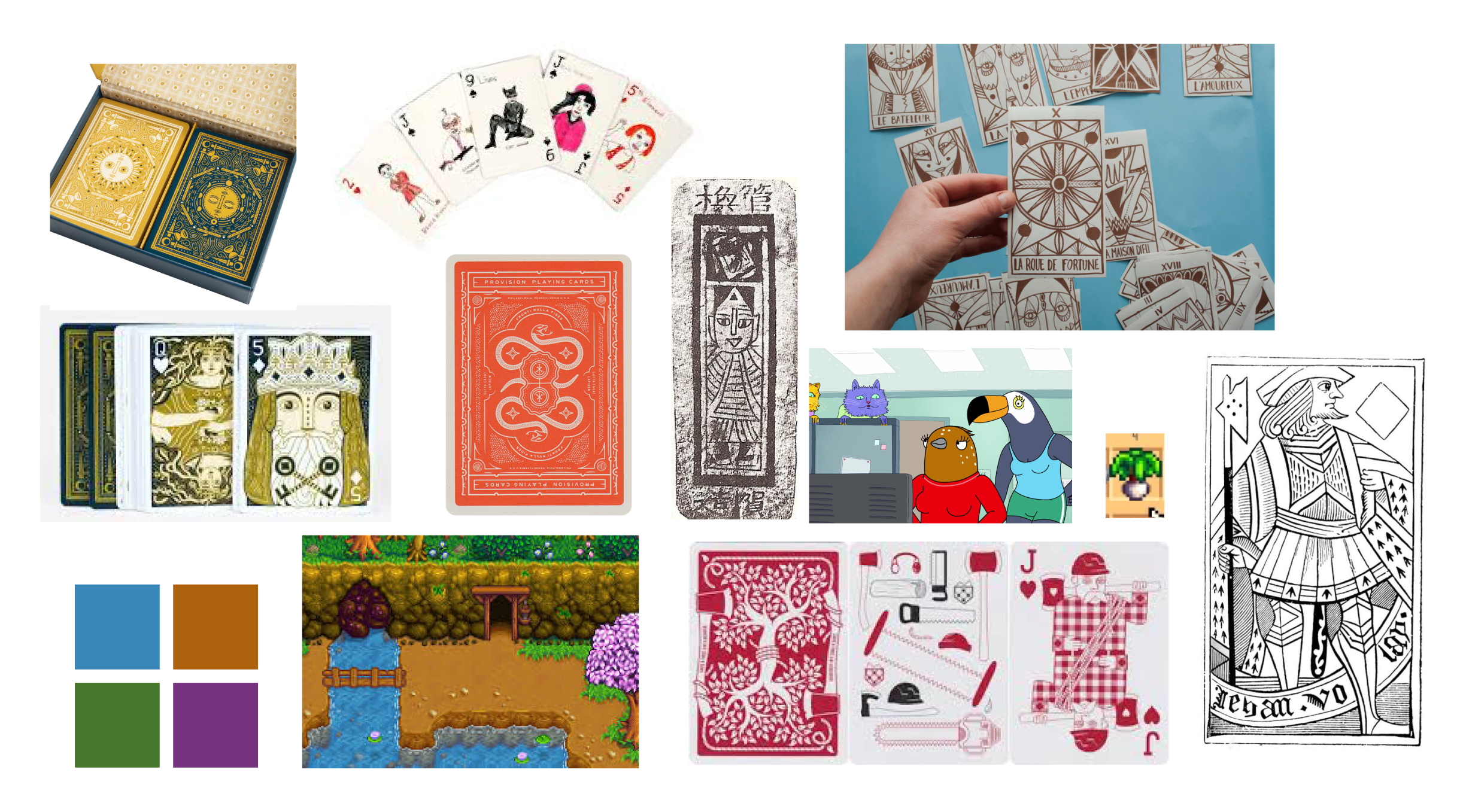
Stardew Valley Playing Cards
Some of the oldest examples of print illustrations were used on playing cards. In this large-scale illustration project, I used characters from the farming simulator Stardew Valley to bring the modern world of video games into the context of a much older practice.
The process for developing my own deck of cards started by researching different art styles featured in other card designs, from the Tang dynasty playing cards to traditional tarot and the more contemporary decks we’re familiar with today. I also spent several hours playing the game and exploring the wiki to gather content and inspiration for balancing familiarity and originality.
I decided that while the pixelated art style could be changed, the saturated colors and the characters’ expressions were essential to making the cards recognizable and maintaining the exciting, cheerful feel of Stardew Valley.
At the start of the game, your character leaves their robotic corporate job for something more real, so I used an irregular, textured brush to allude to the organic, human touch of a simple farm life. This was reinforced by hand-drawing the pips to resemble wooden planks and allowing the silhouettes of each card to extend past the frame.
The initial planning page, where I assigned the characters to cards. I initially chose forageable items from each of the four seasons to represent four card suits: leeks for spring, spice berries for summer, chanterelles for fall, and snow yams for winter. This worked in 2020 when I was only designing the court cards, but when I revisited this project a year later, I reverted to the ubiquitous four-suit system of hearts, diamonds, clubs, and spades.
I designated a season to each suit such that every character of the same suit has a birthday in the same season. For example, all the townspeople on clubs cards have birthdays in the fall, and the Ace of Clubs contains the icon shown on the game clock during the fall crop season.
This way, people who don’t play Stardew Valley can still use the deck for traditional card games, while those who have extensive knowledge of the game’s lore can appreciate the attention to detail.
When I expanded this deck to include all 54 cards, I also extended the color palette to accommodate the increased range of entities depicted and removed the quotes in the background, as not all the cards would contain characters with dialogue.
The first print run of the full deck was in black and red with lines only. It was simple and classic, like many card decks currently on the market, but it felt lifeless and didn’t capture the excitement that inspired me to design the deck in the first place.
So I did it in color.
















